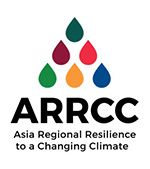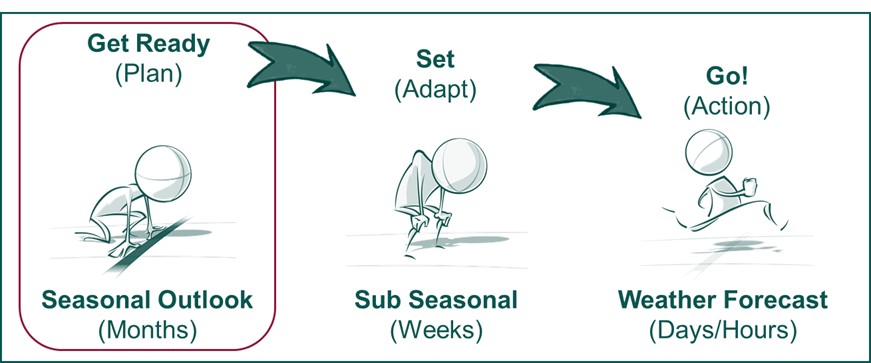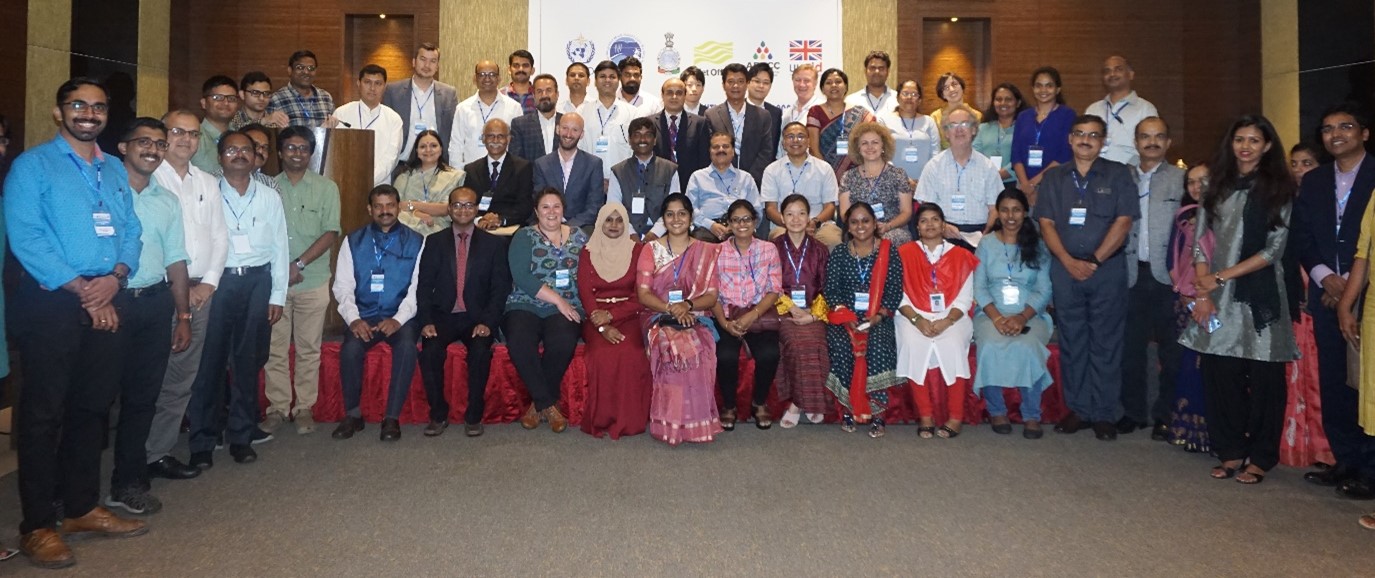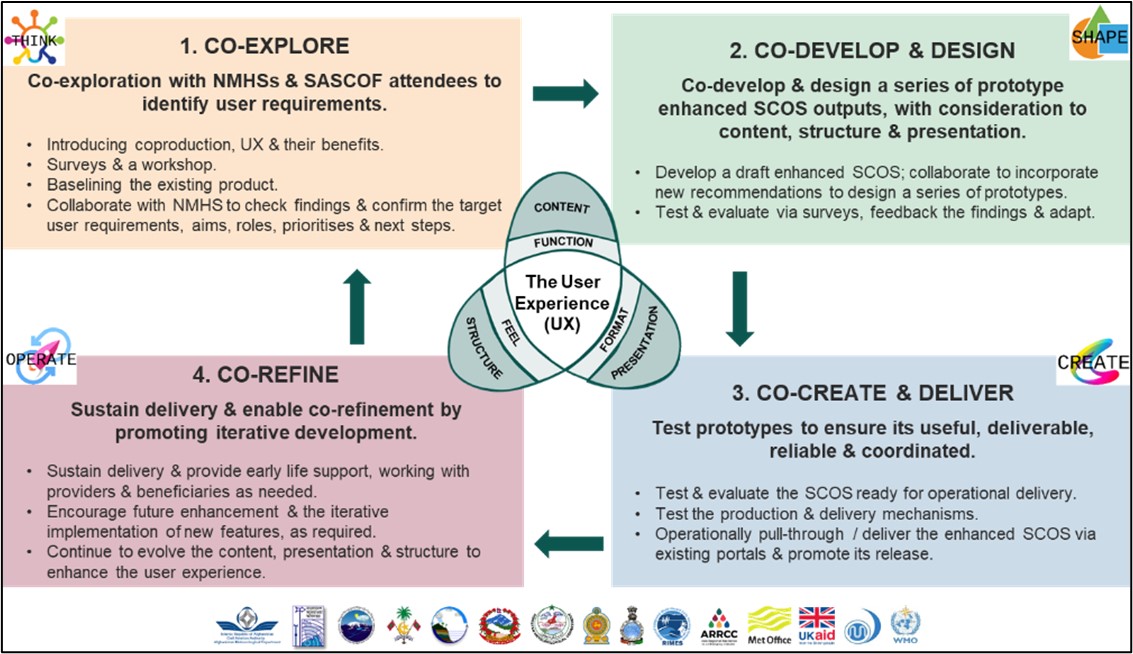Improving seasonal forecast services for resilience
Strengthening seasonal forecast services through the SASCOF

South Asia is a varied and complex region that is highly vulnerable to the effects of climate change. Monsoons are a dominant feature of the season here, with the region typically experiencing a pre-monsoon, the Southwest summer monsoon, post-monsoon and the Northeast winter monsoon. Understanding the factors that drive the seasonal climate of South Asia is critical to support decision-making, sustainable development, risk reduction and planning. This is illustrated below (inspired by an image from colleagues at the Nepal Department of Hydrology and Meteorology).

South Asia Climate Outlook Forum (SASCOF)
Regional Climate Outlook Forums (RCOFs) are meetings between countries with common climatological characteristics. South Asian nations established the South Asia Climate Outlook Forum (SASCOF) to focus on the climate information needs of nations affected by the Asian monsoon, including contributions from the National Meteorological and Hydrological Services (NMHSs) of Afghanistan, Bangladesh, Bhutan, India, Maldives, Myanmar, Nepal, Pakistan and Sri Lanka.
Coordinated by the Regional Climate Centre (RCC) in Pune, India, the SASCOF participants agree an assessment of the state of the regional climate and produce seasonal outlook products which are disseminated at national and sub-national levels to support key sectors for the coming season. The SASCOF also provides an opportunity for strengthening collaboration and two-way engagement between the regions’ climate service providers (NMHSs and RCC Pune) and user sector representatives via a Climate Service User Forum (CSUF) held alongside the SASCOF.

SASCOF-15, Kerela, India, September 2019
Strengthening Climate Information Partnerships – South Asia
Supported by the UK’s Foreign Commonwealth and Development Office (FCDO), the Met Office’s Asia Regional Resilience to a Changing Climate (ARRCC) four-year programme ran from September 2018 until August 2022. Its aim was to strengthen weather and climate services across South Asia, improving the provision of useful, useable and scientifically credible information and expertise to inform decision-making and adaptation (and therefore resilience to climate-related risks).
The ARRCC Strengthening Climate Information Partnerships – South Asia (SCIPSA) project focused specifically on the prediction and application of seasonal outlook information in South Asia. In partnership with RCC Pune and RIMES (the Regional Integrated Multi-Hazard Warning System for Africa and Asia), one of the key activities of SCIPSA was to support and enhance the SASCOF. Over the 4-year programme, some of the activities included:
- co-organisation and delivery of pre-COF activities via interactive workshops and capability building training;
- co-organisation and facilitation of the SASCOF and CSUF events. The combined SASCOF and CSUF are held twice a year (typically in April and September) ahead of the key monsoon seasons for the region. A mini SASCOF is also held in June and November; and
- leading the use of co-production to enhance the SASCOF’s product, the Seasonal Climate Outlook Statement (SCOS).
Seasonal Climate Outlook Statement
A key SASCOF deliverable is the Seasonal Outlook, known as the Seasonal Climate Outlook Statement (SCOS). This provides a regional summary of the forthcoming season’s projected conditions, following a review of the climatic drivers such as the El Niño- Southern Oscillation (ENSO).
In partnership with RCC Pune, RIMES and the SASCOF NMHSs, the SCIPSA team used a co-production approach to enhance the SCOS product. Co-production is a cycle, taking a flexible and collaborative approach built on trust and inclusivity. This form of user-engagement brings together different experiences and practices to jointly create a shared understanding, and to explore, develop, deliver and refine knowledge, a product or service. Through co-production and consideration of the SCOS’s format, functionality and feel, an NMHS-orientated ‘Enhanced SASCOF Outlook’ (SCOS) product is now operationally delivered as part of the SASCOF process. This is available from RCC Pune.

A visual summary of some of the activities involved in the co-production of the SCOS
A changing climate
Seasonal forecasts play an important role in providing early warning of projected conditions to the sectors likely to be impacted. This helps enable mitigation to be taken against potential impacts. As the climate changes around the globe, early warning of impactful conditions, via forums such as SASCOF and products such as the SCOS, will only become more relevant.
Supported by:



